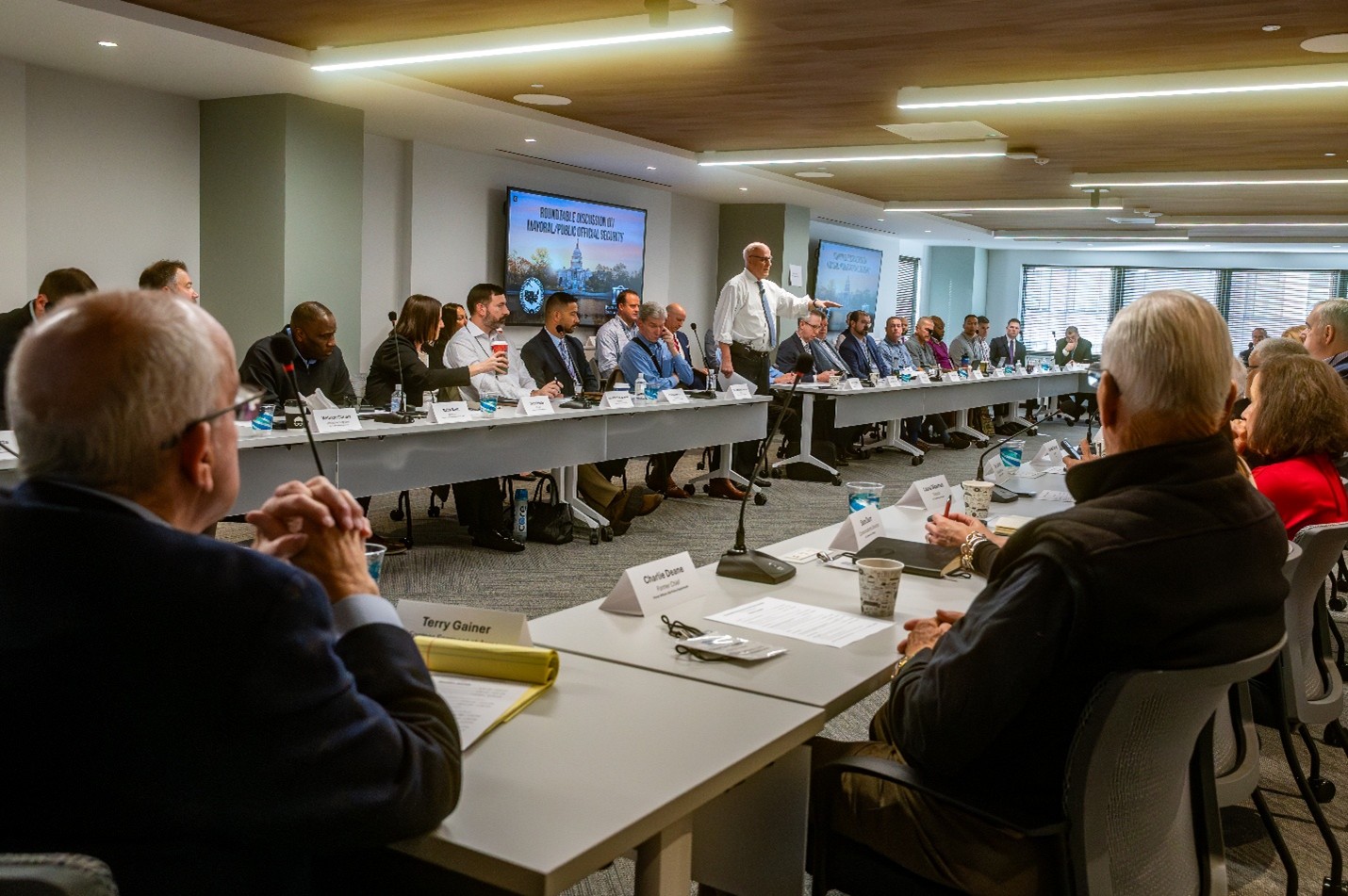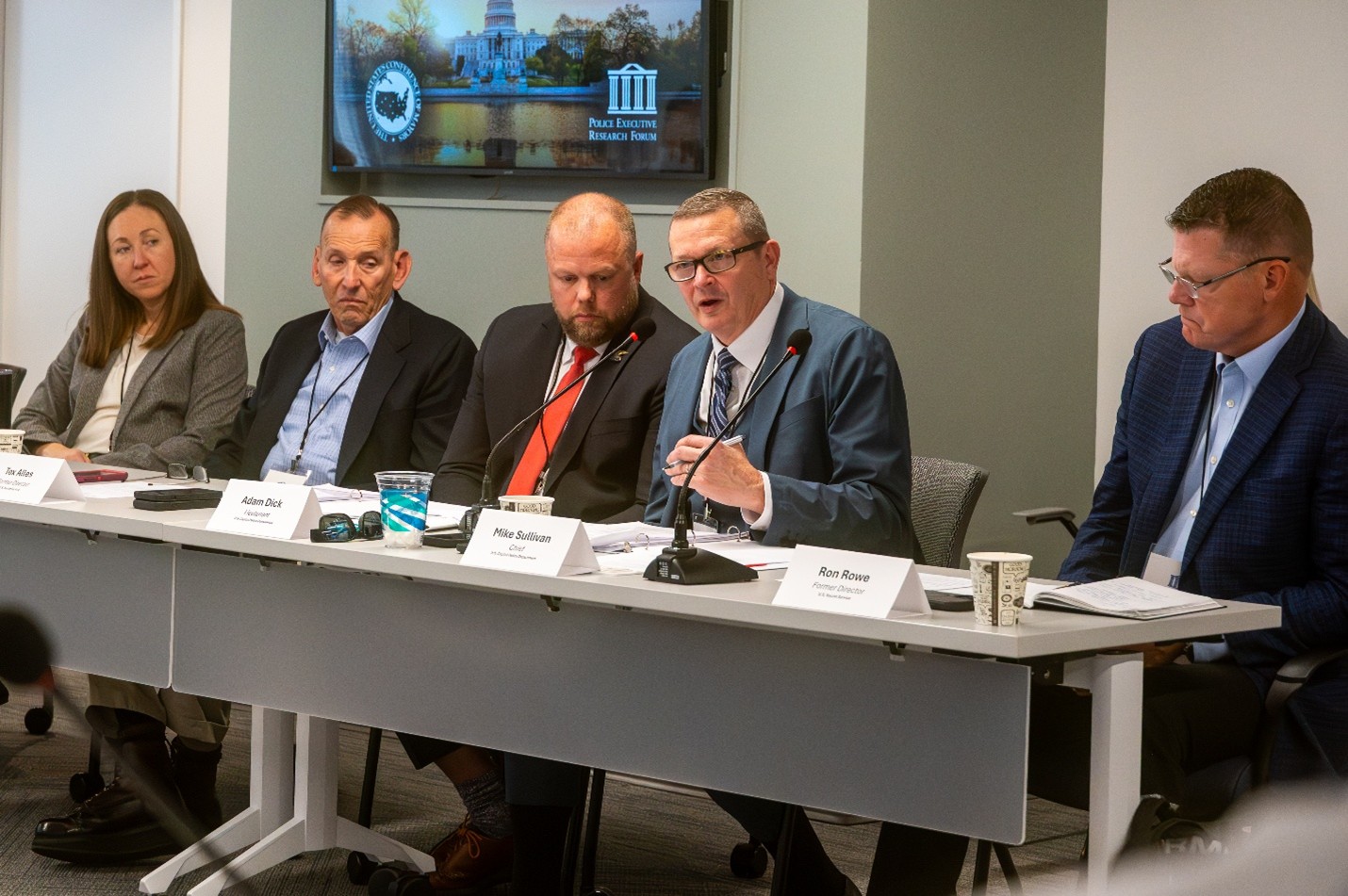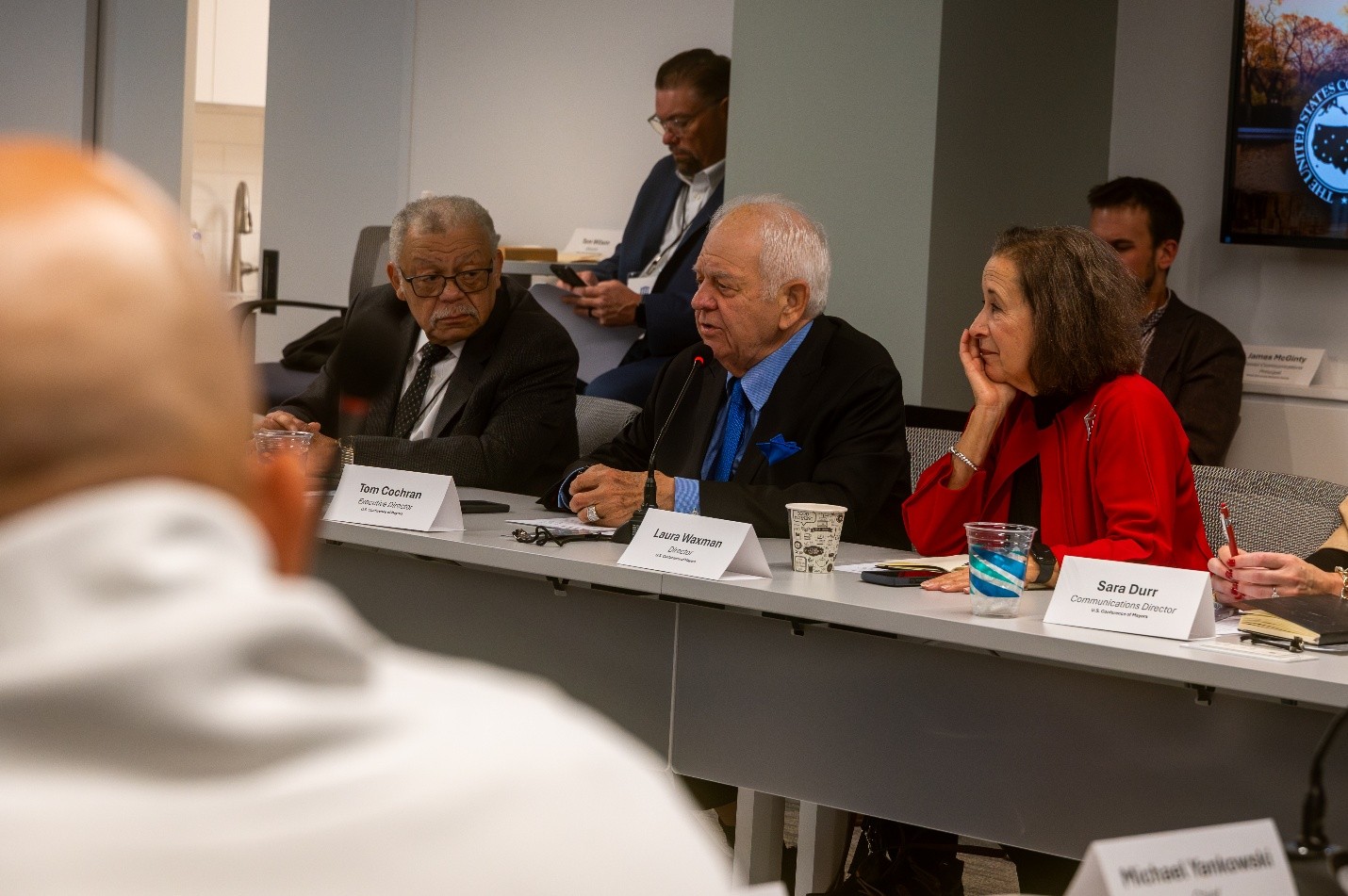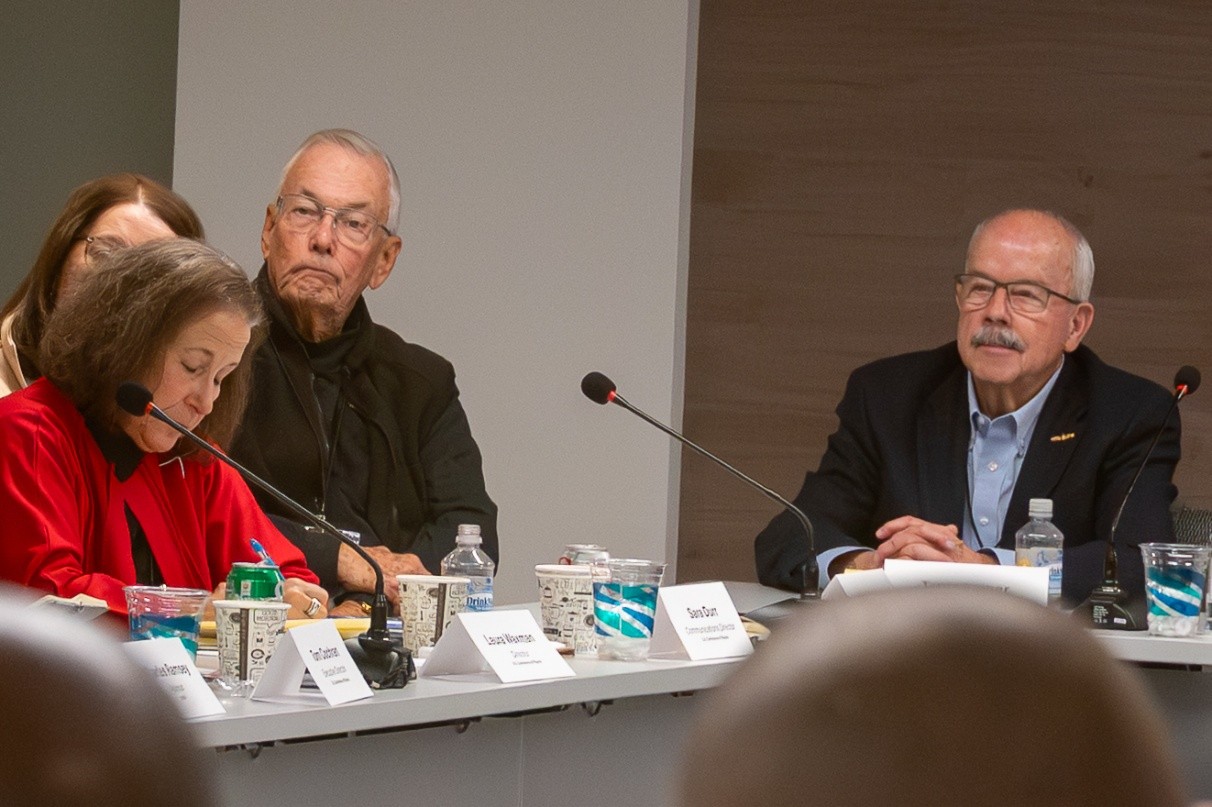|
November 15, 2025 Protecting mayors and other elected officials
PERF members, In the past 18 months, the country has witnessed two separate attempts to assassinate then-presidential candidate Donald Trump; the assassination of UnitedHealthcare CEO Brian Thompson; an arson attack on Pennsylvania Governor Josh Shapiro and his family; a series of targeted shootings in Minnesota, in which State Representative Melissa Hortman and her husband, Mark, were killed and State Senator John Hoffman and his wife, Yvette, were injured; and the assassination of political commentator Charlie Kirk. Elected officials and other high-profile individuals are on edge. The U.S. Conference of Mayors has heard growing concerns from its members about their safety and asked PERF to convene a roundtable discussion on security for mayors. We held that meeting on Wednesday, bringing together more than 60 attendees, primarily police officials responsible for mayoral protection in their cities.
Wednesday’s Roundtable Discussion on Mayoral/Public Official Security. The following are key takeaways from our roundtable discussion and pre-meeting interviews. Threats – Agencies report that they are receiving more threats now than ever before. They need to sort through the large volume of threats and other information, assess their credibility, and make plans to follow up as necessary. Large departments may have their own intelligence units, but smaller agencies may need to rely on law enforcement partners or outside vendors to handle these analyses. – Some threats are announced ahead of time; many are not. No matter how good a job agencies do with their tips and intelligence, the only way to safeguard against a danger with no advance warning is physically—through protection details and other types of security measures. – When assessing known threats, agencies should look at the threatening individual’s means, motives, and opportunities. Does the individual have access to weapons? Do they have a history of violence? Are the threats they’re making specific? Is the individual in the vicinity of the person they’re threatening? – Make contact with as many individuals making threats as possible, even if their threats don’t rise to the level of prosecutable offenses. In many cases, the most effective response may be connecting these people with appropriate mental health services. – Resources such as the U.S. Secret Service’s National Threat Assessment Center, the NYPD’s Operation Sentry program, state agencies, fusion centers, and larger neighboring agencies can help local law enforcement identify and address threats.
Chief Stephanie Whitham, U.S. Supreme Court Police Department; Randolph “Tex” Alles, former director of the U.S. Secret Service; Lt. Adam Dick, U.S. Capitol Police Department; Chief Mike Sullivan, U.S. Capitol Police Department; and Ron Rowe, former director of the U.S. Secret Service. Organizing and Operating Protection Details – Protection details will vary from city to city, influenced by factors such as police staffing levels, threat assessments, and the mayors’ preferences. Generally, agencies should strive to have a core team assigned to executive protection full time, with a reserve of trained officers available to support the core team when needed. – Smaller agencies may not be able to field a large detail. But every agency should designate a single person responsible for mayoral security, even if that person only works that detail part time. – The leader of the executive protection detail should report directly to the police chief or other senior agency leader. The chief should be able to add or remove individuals from the detail as needed. – Law enforcement should ensure the mayor has all relevant safety information and make recommendations about security and protection details. The mayor should consult with the police chief and the leader of the detail, then make final decisions about their detail. Those decisions may be influenced by local political dynamics, personal circumstances, or other factors. – Police and protectees should maintain regular communication regarding threats and security issues. This communication may occur during formal meetings or informal conversations while traveling around the city. – Protection details should clearly articulate the protection team’s capabilities and limitations in any situation to the police chief and the mayor. – Agency leaders should develop a rigorous application and selection process for staffing a mayoral protection detail. Officers on the detail should be prepared to dedicate significant time to the role—often including overtime. They should have both tactical competence and strong interpersonal skills. They will work closely with the mayor and must have the professionalism and discretion to keep sensitive information confidential. Training – Agencies should provide personnel with role-specific training. Larger agencies may be able to provide their own training. The NYPD, the U.S. Secret Service, private and regional providers, and larger neighboring agencies are also potential sources of relevant instruction. – Officers on the protection detail should receive initial training and periodic refresher training. – Field training is important and helps officers adjust to the mayor's specific issues and preferences.
Charles Ramsey, advisor at the U.S. Conference of Mayors and founding partner of 21CP Solutions; Tom Cochran, executive director of the U.S. Conference of Mayors; and Laura Waxman, director of Public Safety for the U.S. Conference of Mayors. Protection at the Office – Agencies should assess the security of a mayor’s office, the city hall, and other municipal buildings and recommend orders for improvement. These orders might include limiting photography in municipal buildings, limiting building access to those with appointments or other business, and prohibiting firearms for anyone other than law enforcement personnel. – Police leaders should ensure all municipal staff and elected officials, including the mayor, know what to do and whom to contact in the event of a workplace emergency. – All elected officials and staff should be trained to recognize and process threats received by phone, mail, email, social media, in person, or any other means. Protection at Home – Agencies should know what personal information about the mayor is publicly available. Take available steps to conceal home addresses and other potential vulnerabilities. Vendors are available to provide such services with varying levels of sophistication. – A 24/7 security detail requires significant resources. Technological security measures, such as cameras with alarms, are important and often more affordable than round-the-clock security staffing. A camera system is especially useful if it is connected to a law enforcement real-time crime center. – People should establish a safe room in their house. That room should have strong locks and a way to communicate for help—preferably a landline. – Security personnel should enter elected officials’ addresses into law enforcement’s computer-aided dispatch (CAD) system so dispatchers and responding officers have that important context when a call comes in for that address. – Family members should be trained to recognize and handle threats.
Ron Rowe, former director of the Secret Service; Chief Kathy Lester, Sacramento Police Department; and Ed Davis, CEO of Edward Davis Co. Protection Outside of the Office and Home – Agencies should train protectees, their families, and staff on basic situational awareness regarding security concerns. – You should encourage protectees to avoid traveling in a predictable manner. – Chiefs can encourage protectees to avoid publicly sharing their schedules far in advance. – Protection teams can conduct advance work to scout travel locations, preparing for possible scenarios and potential issues. – Security personnel must be aware that traveling by plane or to international destinations with weapons can be complicated and often prohibited by law.
Laura Waxman, director of Public Safety for the U.S. Conference of Mayors; Charlie Deane, former Prince William County (VA) police chief; and Terry Gainer, former chief of the U.S. Capitol Police Department and former sergeant at arms of the U.S. Senate. Thanks to everyone who made the trip to Washington to share their expertise. Participants said that in today’s heightened security environment, the field needs more information on best practices and training, as well as technical support for gathering and assessing intelligence about threats. Larger agencies have some resources to put toward intelligence and mayoral protection, but these tasks can be a real challenge for smaller agencies. Unfortunately, elected officials live with safety risks that cannot be ignored. I hope this list helps mayors, police chiefs, and others responsible for security as they work to ensure that public servants can do their jobs safely. Best, Chuck |





